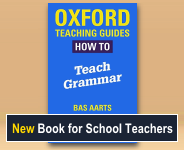Glossary: descriptive
Explanation
A descriptive approach to language aims to describe the way people actually use the language. It contrasts with a prescriptive approach, which aims to give people rules for how they should use language.
Englicious contains many resources for English language in schools, but the vast majority of them require you to register and log in first. For more information, see What is Englicious?

